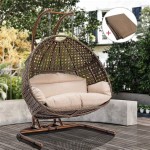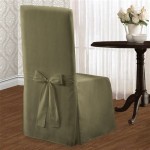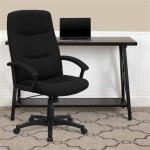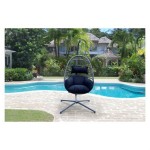How To Replace A Chair Cushion
Chair cushions contribute significantly to both the comfort and aesthetics of a chair. Over time, cushions can become worn, flattened, or stained, necessitating replacement. This guide provides a comprehensive overview of the process of replacing a chair cushion, outlining the necessary tools, materials, and steps involved.
The initial step involves determining the type of chair cushion that requires replacement. Cushions can be broadly categorized into attached and detached types. Attached cushions are typically fixed to the chair frame using screws, staples, or Velcro. Detached cushions are loose and placed on the chair seat. Identifying the cushion type informs the subsequent removal and replacement procedures.
Gathering the necessary tools and materials is crucial for a smooth replacement process. Commonly required tools include a screwdriver (for screws), a staple remover (for staples), scissors, and a measuring tape. For cushions requiring new filling, materials like foam, batting, or down feathers may be necessary. Replacement fabric should be selected based on durability, aesthetics, and desired comfort level.
Removing an attached cushion begins with identifying the attachment method. Screws can be removed using a screwdriver, ensuring the correct size and type is used to avoid stripping the screw head. Staples can be carefully removed using a staple remover, working methodically to avoid damaging the surrounding fabric or chair frame. Velcro attachments typically involve peeling the cushion away from the Velcro strips on the chair frame.
Once the old cushion is removed, measurements should be taken to determine the dimensions required for the replacement. The length, width, and thickness of the cushion should be accurately recorded. These measurements are crucial for purchasing pre-made cushions or cutting foam and fabric for custom replacements.
If opting for a pre-made cushion, ensure the dimensions match the previously recorded measurements. Consider the thickness and firmness of the cushion to ensure it provides adequate support and comfort. Pay attention to the fabric and color to ensure it complements the chair and surrounding décor.
Creating a custom cushion provides greater control over the final product. Using the recorded measurements, cut the foam to the desired size and shape. Fabric should be cut, allowing for extra material to wrap around the foam and create seams. A sewing machine can be used to create strong, durable seams. Alternatively, hand-stitching can be employed, although it requires more time and effort.
Attaching the new cushion depends on the original attachment method. If the chair previously utilized screws, pre-drill pilot holes in the new cushion to avoid splitting the foam. Align the cushion with the chair frame and secure it using screws. For staple attachment, use a staple gun to secure the fabric to the chair frame, ensuring staples are evenly spaced and firmly embedded. Velcro attachments involve adhering the corresponding Velcro strips to the cushion and chair frame.
Selecting the appropriate cushion filling material impacts both comfort and durability. High-density foam provides firm support and maintains its shape well. Low-density foam offers a softer feel but may compress over time. Batting provides a plush, comfortable feel and can be used in combination with foam. Down feathers offer a luxurious feel but require more maintenance and may not be suitable for all environments.
Choosing the right fabric is essential for both aesthetics and practicality. Durable fabrics like canvas or microfiber withstand wear and tear and are easy to clean. Linen and cotton offer a softer feel but may require more delicate care. Consider the overall style of the chair and the surrounding environment when selecting a fabric color and pattern.
Regular maintenance helps prolong the lifespan of chair cushions. Regular vacuuming removes dust and debris that can contribute to wear and tear. Spot cleaning stains promptly prevents them from setting and becoming permanent. Rotating cushions periodically ensures even wear and prevents one side from becoming excessively compressed.
Addressing specific cushion issues requires targeted solutions. Flattened cushions can often be revived by adding additional filling or replacing the existing foam. Torn seams can be repaired using a needle and thread or a sewing machine. Stains can often be removed using appropriate cleaning agents and techniques, depending on the fabric type and the nature of the stain.
Safety precautions should be observed throughout the cushion replacement process. When using sharp tools like scissors or staple guns, exercise caution to avoid injuries. When working with foam, ensure adequate ventilation to avoid inhaling dust or fumes. When using cleaning agents, follow the manufacturer's instructions carefully and wear appropriate protective gear.

How To Replace A Chair Cushion Confessions Of Serial Do It Yourselfer

The Fast Way To Replace A Dining Chair Cushion Butterfly House

How To Replace A Chair Cushion Confessions Of Serial Do It Yourselfer

How To Recover Chair Cushions Diy Reupholster Dining Youtube

How To Replace A Chair Cushion Confessions Of Serial Do It Yourselfer

The Fast Way To Replace A Dining Chair Cushion Butterfly House

How To Reupholster Dining Chairs Diy Tutorial

How To Replace A Dining Chair Cushion The Easy Way

How To Replace A Chair Cushion Confessions Of Serial Do It Yourselfer

3 Easy Ways To Recover A Chair Cushion Wikihow Life








